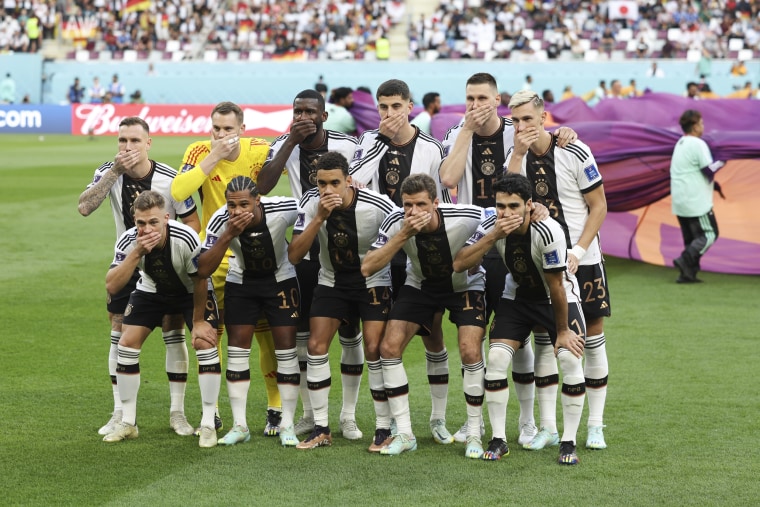
Colorado Springs shooting shows LGBTQ+ people facing ‘different kind of hate’

The news article, titled “Colorado Springs shooting shows LGBTQ+ people facing ‘different kind of hate’”, discusses the shooting at the LGBTQ+ club, Club Q. This tragic event is even more upsetting after the article details how Club Q had been a source of true community: “After he became co-owner in 2014, Grzecka helped mold Club Q into a community centre – a platform to create a ‘chosen family’ for LGBTQ+ people, especially for those estranged from their birth families.” Thus, the marginalized LGBTQ+ community came together at Club Q, which is the only gay bar in the conservative town of Colorado Springs. This ties into main themes in Stef Shuster’s and Laurel Westbrook’s study, “Reducing the Joy Deficit in Sociology: A Study of Transgender Joy.” The authors discuss how being from a marginalized group can facilitate meaningful connections with other people, and embracing one’s marginalized identity can improve people’s quality of life. This was the case for those who found comfort in those they met and bonded with at Club Q, until the tragic shooting occurred and disrupted that sense of joy and unity away from them.
German soccer players cover their mouths in team photo protest ahead of World Cup match in Qatar

“German soccer players cover their mouths in team photo protest ahead of World Cup match in Qatar ” writes about Germany’s response to legislation in Qatar and their disapproval of players from various countries’ teams wearing their rainbow “One Love” captain armbands. In Qatar, the LGBTQ+ community faces legal challenges including punishments such as prison sentences and fines for expressing homosexuality. David Li references Germany’s Twitter post saying “human rights are non negotiable… “That should be taken for granted, but it still isn’t the case. That’s why this message is so important to us.” As in Jayaprakash Mishra’s article “Queering Emotion in South Asia: Biographical Narratives of Gay Men in Odisha, India”, homosexuality is frowned upon in South Asia like in Qatar. Although this distaste towards the LGBTQ+ community is more prominent in Qatar than South Asian countries, there is a similar underlying discrimination and outcasting of LGBTQ+ individuals. People of the community are made to feel guilty, wrong, and forced to mask their queerness because of legal repercussions. Like in South Asia, queer identifying people in Qatar are expected to disguise and disregard their sexual identity to align with society’s gender binary ideology as described by Mishra. However, the German soccer team protests Qatar’s government on behalf of the LGBTQ+ community and Germany’s beliefs for sake of global human rights and hopes for all people to be treated equally regardless of their identity.
The anxieties of growing old when you’re LGBTQ

https://www.washingtonpost.com/health/2022/10/23/lgbtq-aging-worries/
Petrow uses the analogy of gifting someone chicken soup when they’re sick for having a social support system, something needed by people to flourish, feel safe, and accepted. The article “The anxieties of growing old when you’re LGBTQ” discusses the lingering question that many queer individuals have: “‘Who will take care of us when we need help?’ [and] ‘Where will we go when we can no longer take care of ourselves?’” (Petrow). Petrow references the non-profit organization SAGE, the National Resource Center on LGBTQ+ Aging, and Healthypeople.gov as sources documenting the changing health status of queer elders. The higher levels of loneliness and isolation are also included as a cause for worry about aging. Chief executive of SAGE, Michael Adams, says queer individuals are “lacking the personal connections that often come with traditional family structures” due to their sexual identity that contributes to their loneliness, isolation, and rejection.
This article relates to “Queering Emotion in South Asia: Biographical Narratives of Gay Men in Odisha, India” by Jayaprakash Mishra. Mishra discusses how homosexuality is disapproved in South Asia and frequently pitted against their family and the queer population and left to choose as well as the fostering of chronic guilt. These ideas presented by Mishra relate to those made by Petrow and how LGBTQ+ people often find themselves disguising and dismissing their queerness to fit into society and take care of their families. However, this estranges them from the queer community and if not receiving of approval by their families then leaves them without potential care as they age.
The article also relates to ideas expressed by Kirsty Liddiard in “The work of disabled identities in intimate relationships” in which marginalized identities may succumb to a relationship or partnership with someone they may not prefer simply in fear of life without someone. In this case, being a queer individual in a homophobic society can relate to being a disabled individual in an ablest society where both groups become reliant on their own smaller marginalized communities for emotional security–if possible to obtain–but physical aid and expressive assistance from others in their lives such as family, friends, and significant others. Petrow highlights the widespread fear of growing and aging alone in the LGBTQ+ community which parallels the fears of disabled individuals not having someone to take care of them if they sought out a more emotionally fitting partner. Here, there can be similarities made between Petrow and Liddiard’s articles in which marginalized groups feel alienated and pressured to settle in order to survive.